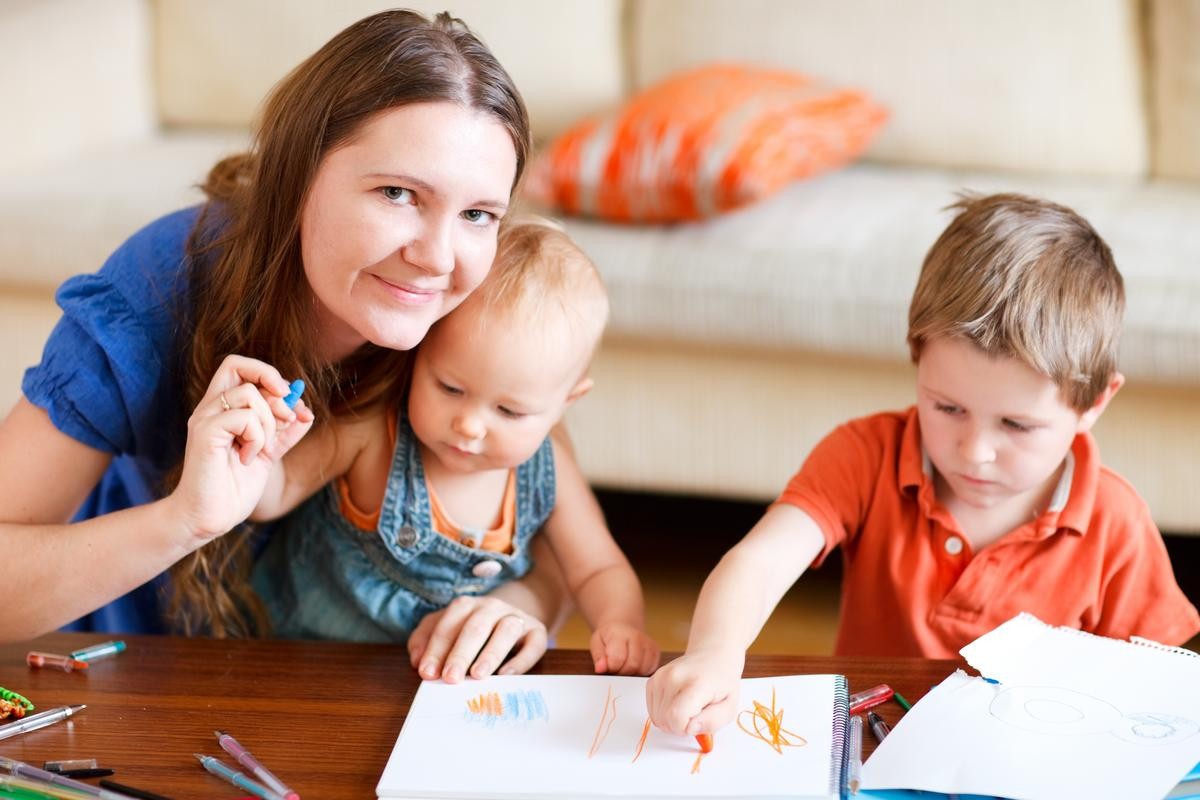Get real, get organized, and get out of the way
“Let’s go, Ian!” I yell upstairs for the sixth time this morning. “Now!”
My younger son, Sam, stands at the door. He has his shoes and jacket on, backpack in hand. He just watches me. I grab Ian’s jacket and backpack, and open the door. We are late—again.
At school, Sam just signs in and trudges down the hall to his classroom. He knows the drill. He doesn’t say anything as he walks away from me, but I notice his head is down. He doesn’t look back at me. Ian is next to me, complaining nonstop of a stomachache or headache or something. He still doesn’t have his coat on. I sign him in and walk him to his classroom.
As I drive to work, I feel tears filling my eyes. They start falling in big, fat blobs down my cheeks. I pull over, no longer able to see the road ahead. I let the tears come and listen to the lecture I am giving myself in my head: You have to stop letting Ian run the show. Who’s in charge here? It’s not fair to Sam. It’s not fair to you. It’s not fair in general.
These are the moments that are hard to bear as a Solo Mom: when we can see that things need to change, and we want someone to help us and make it all better. But we have to hitch up our big-girl panties, wipe away the tears, and make a plan.
It’s not easy being a Solo Mom to a kid with issues, no matter how involved you might be. It’s just not. It’s also not easy parenting—period. So how do we teach, love, and guide our kids with special needs and their siblings without leaving anyone trudging down the hall alone?
Through years of trying different approaches and getting advice from other Solo Moms, this is what I’ve learned:
Get real. We need to have ongoing and honest talks with our kids about their sibling with special needs. They need to know what is within their control and what is not. This also means we can’t make excuses for behaviors that are controllable, and we sometimes need to try not to do too much for them and let them figure things out on their own.
Our children need to know about their sibling’s disability, and it is important they are able to ask anything about it (not only once, but again and again). I once heard of an eight-year-old who asked his teacher if another child’s disability was contagious. (Young kids often worry about that.) Another girl, whose sister has autism, asked her older sibling if people thought that because her sister had autism, she had it, too. Have you given your children a chance to ask all the questions swirling in their heads without the fear of judgment or shame?
There are children’s books (both picture and chapter) that are written from a sibling’s perspective. Reading these books with your children is a great way to get them talking. Some of my favorite picture books are:
- Ian’s Walk, by Laurie Lears (Albert Whitman & Company, 1998)
- We’ll Paint the Octopus Red (Woodbine House, 1998) and The Best Worst Brother (Woodbine House, 2005), both by Stephanie Stuve-Bodeen
- My Brother Charlie, by Holly Robinson Peete and Ryan Elizabeth Peete (Scholastic Press, 2010)
Some great chapter books include:
- Al Capone Does My Shirts, by Gennifer Choldenko (Puffin Books, 2006)
- Rules, by Cynthia Lord (Scholastic Paperbacks, 2008)
- Tru Confessions, by Janet Tashjian (Square Fish, 2007)
Get organized. I bet there isn’t a mom among us who hasn’t heard that you have to set aside time for each child. We know it, but do we do it? Ask your child if he or she would like to do something together and offer a few ideas. It doesn’t have to be a big thing; elementary-aged kids are happy to play games or make and build things with you. You can play Wii or a video game with an older child, and every teen wants to get in more driving time, so that is a great way to share an activity.
Get out of the way. Sibling groups are a great way for kids to share their fears and feelings with those who are going through a similar experience. Groups such as this are becoming more popular, so hopefully you can find one in your area. There is a national program called the Sibling Support Project that offers several books and resources for children who have siblings with special needs, and it also offers workshops called Sibshops across the county.
Is it possible to give your kids time to be together without you running things? I asked Sam if there were any activities he might enjoy doing with Ian, and he suggested listening to Harry Potter audiobooks together. They gathered some pillows, turned out the lights, and listened together. It didn’t last long, but it did give them a positive experience to share that wasn’t driven by me.
Solo Mom to Solo Mom, these realizations I’m sharing with you have helped me form a close relationship with both of my boys. They know I tried my best to give each of them my time (and I still do) and that fair is not always equal. (Ian still needs more time and energy.) I can say without a doubt that they know I will always be there for them, and that makes all the difference.
Curious how other Solo Moms navigate sibling issues? Post a question on Sister Chat.
Anna Stewart is ESME’s Kids with Special Needs Resource Guide and the Solo Mom of a daughter and two sons on the brink of adulthood. She’s a champion for the rights of people living with disabilities and those who love them.
Please feel free to contact us with any comments or questions.









